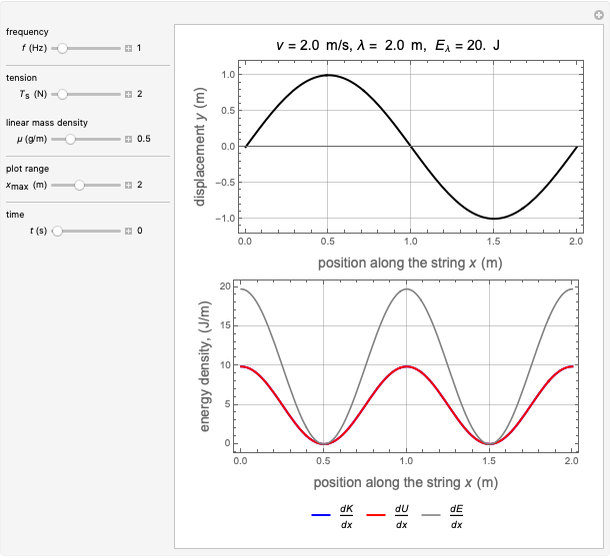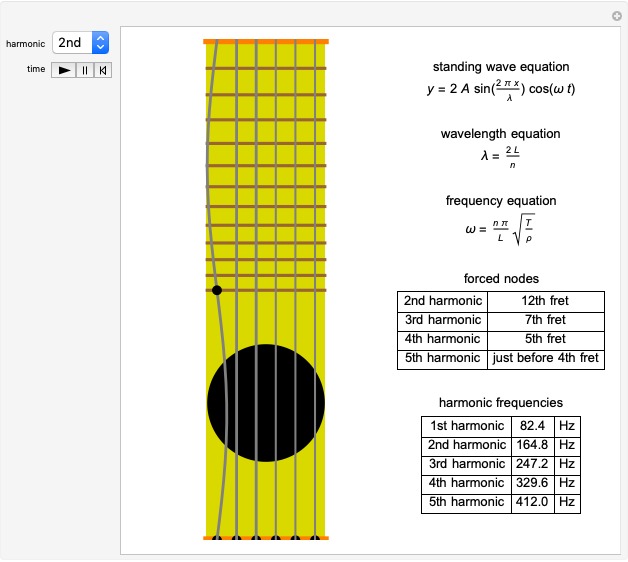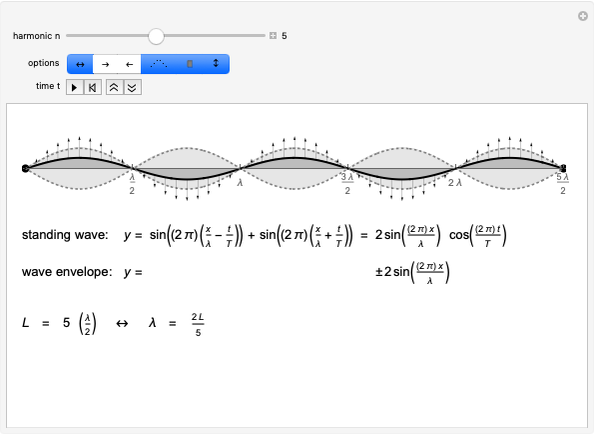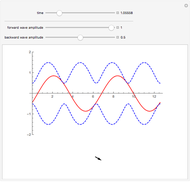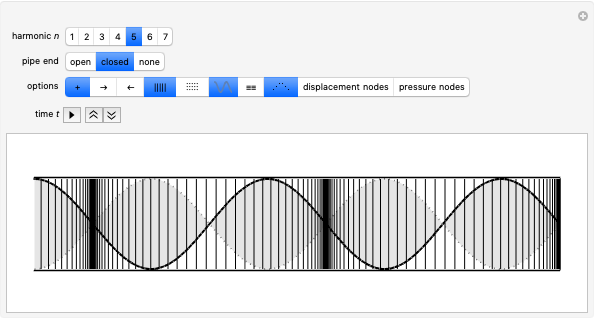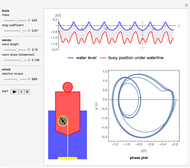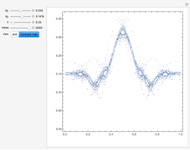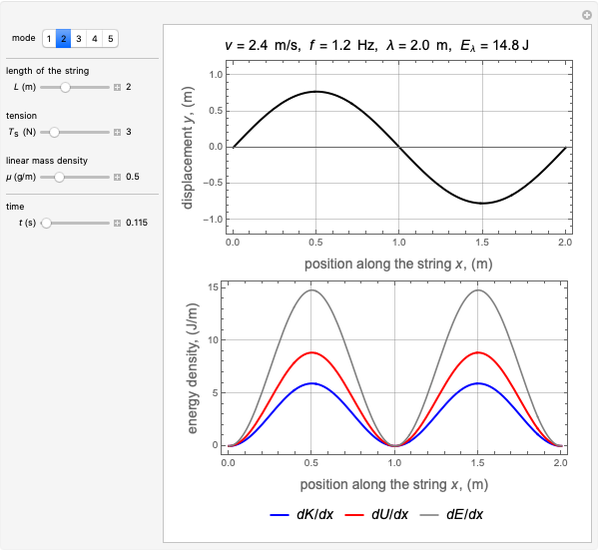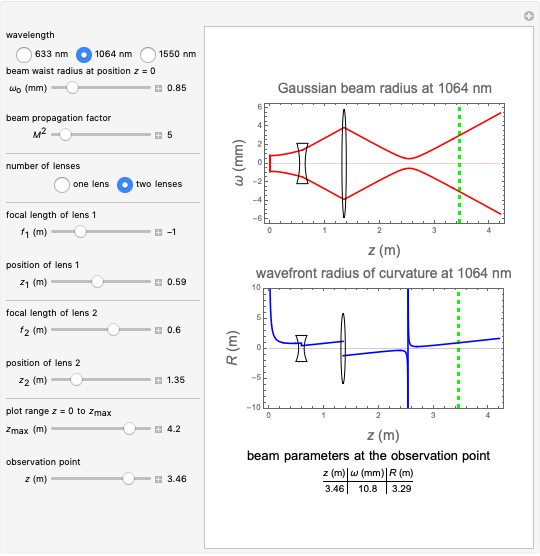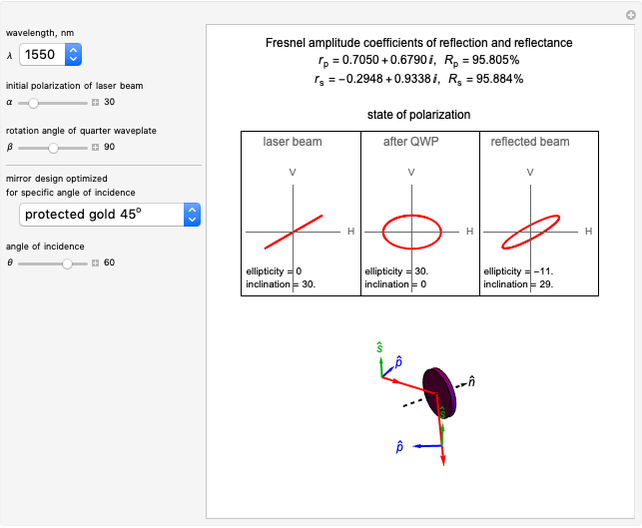Energy of a Standing Wave on a String

Requires a Wolfram Notebook System
Interact on desktop, mobile and cloud with the free Wolfram Player or other Wolfram Language products.
This Demonstration shows the distribution of energy in a standing wave on a string. The mechanical energy  in a differential string element varies as
in a differential string element varies as  along the string. As the string oscillates in time, the kinetic energy
along the string. As the string oscillates in time, the kinetic energy  and potential energy
and potential energy  in a differential string element
in a differential string element  are periodically interchanged. The mechanical energy
are periodically interchanged. The mechanical energy  is conserved. Integrating the differential element of energy
is conserved. Integrating the differential element of energy  over one wavelength gives the total energy
over one wavelength gives the total energy  , which is conserved.
, which is conserved.
Contributed by: Anna Petrova-Mayor (August 2022)
Open content licensed under CC BY-NC-SA
Snapshots
Details
Standing waves on a string with fixed ends result from the interference of two waves with equal amplitude  and frequency
and frequency  , traveling in opposite directions with speed
, traveling in opposite directions with speed  . The speed of the waves depends only on the tension
. The speed of the waves depends only on the tension  and linear density
and linear density  of the string. Standing waves exist only at frequencies that satisfy the boundary conditions
of the string. Standing waves exist only at frequencies that satisfy the boundary conditions  where
where  is the length of the string and
is the length of the string and  is the mode (
is the mode ( ). The wavelength of a standing wave for a given mode is
). The wavelength of a standing wave for a given mode is  .
.
Standing waves can be represented by  , where
, where  is the wave number and
is the wave number and  is the angular frequency. The displacement of the string
is the angular frequency. The displacement of the string  oscillates as
oscillates as  and the amplitude varies along the string as
and the amplitude varies along the string as  . The points on the string where
. The points on the string where  are called nodes and the points with maximum amplitude
are called nodes and the points with maximum amplitude  are antinodes.
are antinodes.
For a string element  the kinetic energy is
the kinetic energy is

and the potential energy is
 .
.
You can vary the time  and observe the oscillation of the standing wave and the continuous transformation of energy from kinetic to potential and back.
and observe the oscillation of the standing wave and the continuous transformation of energy from kinetic to potential and back.  at the nodes where the string elements do not move and the string is undisturbed.
at the nodes where the string elements do not move and the string is undisturbed.  and
and  reach maximum values (at different times) at the antinodes. The total mechanical energy in the string element
reach maximum values (at different times) at the antinodes. The total mechanical energy in the string element  ,
,  , is time independent;
, is time independent;  is conserved. The energy for wavelength λ, given by
is conserved. The energy for wavelength λ, given by  , is conserved.
, is conserved.
Reference
[1] L. M. Burko, "Energy in One-Dimensional Linear Waves in a String," European Journal of Physics, 31(5), 2010 L71–L77. doi:10.1088/0143-0807/31/5/L01.
Permanent Citation






